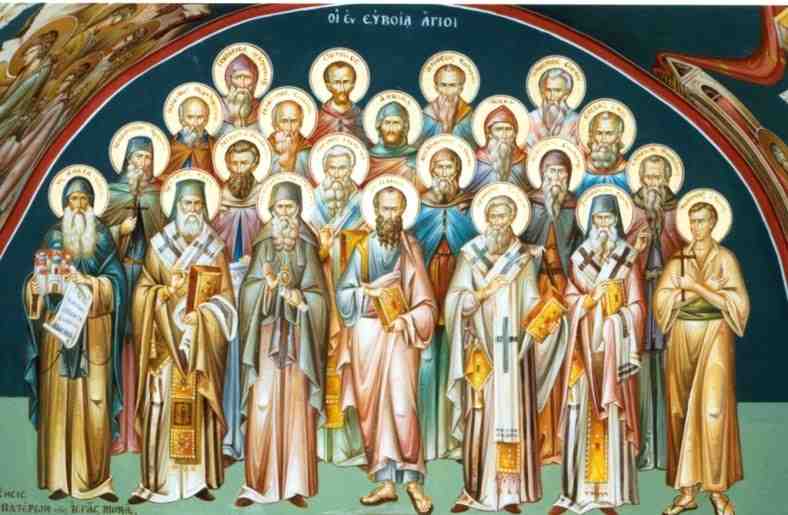Characteristics in the Lives of the Saints (3)

We resume talking about some of the common characteristics in the lives of Saints.
1- A Saint is one who lives the Gospel.
2- A Saint is one who lets the Holy Spirit lead his life.
3- A Saint is one who seeks blessing.
4- A saint is one who is not naive or superficial in knowing the bible.
5- A saint is one who realizes the nature of his own body and successfully tames it.
A saint recognizes that his body is a great gift granted to him by God and that it reflects the image of God (Genesis 1:27) so he thanks God for it, nourishes and cherishes it (Ephesians 5:29). He considers it a blessed talent from God that should be gainfully invested for goodness and edification.
A saint also realizes that after the sin of Adam and Eve, sin has made its way to the flesh. When sin entered into the flesh, strange things, which defiles its nature, entered into it as well. This is what the Fathers of the church call “Passions” or whims. Therefore, the flesh became prone to evil tendencies that need to be tamed or rather crucified so that the flesh is kept pure, “Those who are Christ’s have crucified the flesh with its passions and desires.” (Galatians 5:24). These passions and whims, if they are not brought into subjection, they can through man outside the circle of everlasting live, as our teacher Saint Paul said about himself, “I discipline my body and bring it into subjection, lest, when I have preached to others, I myself should become disqualified.” (1 Corinthians 9:27). That is to say, without a firm stand with our flesh and suppressing its passions, the spirit cannot be saved.
Here, we understand the path of strife in Christianity being:
First, strife is used to strike a balance in dealing with the flesh. On the one hand, I nourish and cherish it, and on the other hand, I discipline it and bring it into subjection. The fathers call this stage “the stage of purification form passions.”
Second, Strife is used for enlightenment by grace, through the divine word and prayer.
Last, Strife is a continuous process in prayer to make us united with God.
These three stages: Being liberated from the passions, Enlightenment, and the unity with God are described by the Fathers in interpreting the following verse: “… Let us run with endurance the race that is set before us.” (Hebrews 12:1).
This is a separate discussion that would be presented in a different article.
In the light of this concept, we can then see that a saint is one who nourishes the body only according to its need and nothing more. In the mean time he elevates it above its flawed desires and passions, for a saint is one who bears in his body the marks of the Lord Jesus (Galatians 6:17), the marks of the cross by whom the world has been crucified to me, and I to the world (Galatians 6:14).
A saint is one who lives the commandment that says: “ If you live according to the[Passions of the] flesh you will die; but if by the Spirit you put to death the deeds of the body [the lusts of the body], you will live.” (Romans 8:13).
And here, a story about saint Poemen in the fifth century comes to mind. He was a very wise and enlightened man. When some people criticized him for washing his feet during noon time to cool it off from the heat, with the pretense that this is against the ascetic order of monasticism, he answered: “The Bible does not teach us to kill the body, but to kill the lusts of the Body.”
We will conclude this topic in the following article by the grace of God.